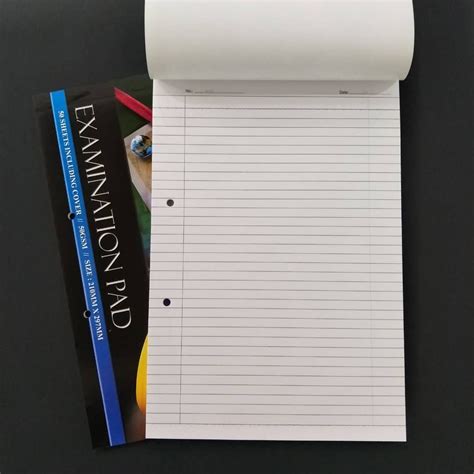What is ENIG?
ENIG, which stands for Electroless Nickel Immersion Gold, is a surface finish often used on printed circuit boards (PCBs). It consists of an electroless nickel plating covered by a thin layer of immersion gold, which protects the nickel from oxidation.
Advantages of ENIG
- Flat surface finish
- Good solderability
- Corrosion resistance
- Excellent shelf life
- Suitable for fine-pitch components
Understanding Test Pads
Test pads are essential features on a PCB that allow for testing and debugging of the board. They provide access points for probing and measuring electrical signals, voltage levels, and continuity.
Types of Test Pads
- SMD (Surface Mount Device) test pads
- Through-hole test pads
- Edge connector test pads
- Via test pads
ENIG test pad: With or Without Solder Paste?
When it comes to ENIG test pads, a common question arises: should they be used with or without solder paste? To answer this question, let’s first understand the role of solder paste in the PCB Assembly process.
What is Solder Paste?
Solder paste is a mixture of tiny solder particles suspended in flux. It is used to temporarily attach surface mount components to the PCB before the soldering process. The solder paste is applied to the PCB pads using a stencil or syringe, and then the components are placed on top of the paste.
Applying Solder Paste to ENIG Test Pads
In most cases, it is not necessary to apply solder paste to ENIG test pads. The main purpose of test pads is to provide access points for testing and debugging, not for soldering components. Applying solder paste to test pads can actually hinder the testing process by making it difficult to establish proper contact with probes or test clips.
However, there are some situations where applying solder paste to ENIG test pads might be beneficial:
- When test pads are used as anchor points for test fixtures or jigs
- When test pads need to be connected to external devices or equipment
- When test pads are used for programming or firmware updates
In these cases, a small amount of solder paste can be applied to the test pads to facilitate a more secure and reliable connection.
Best Practices for ENIG Test Pads
- Keep test pads clean and free from solder paste, flux residue, or other contaminants
- Ensure test pads are easily accessible and not obstructed by components or other features
- Use appropriate test probes or clips that are compatible with the size and shape of the test pads
- Follow proper ESD (Electrostatic Discharge) precautions when handling or probing test pads
- Document the location and function of each test pad in the PCB design files and assembly instructions

Frequently Asked Questions (FAQ)
1. Can I use ENIG test pads for soldering components?
While it is possible to solder components to ENIG test pads, it is not recommended. Test pads are primarily designed for testing and debugging purposes, not for permanent component attachment. Soldering components to test pads can make it difficult to access them for future testing or repairs.
2. How big should ENIG test pads be?
The size of ENIG test pads depends on several factors, such as the PCB design rules, the test equipment being used, and the available space on the board. As a general guideline, test pads should be at least 0.5mm in diameter, with a minimum spacing of 0.5mm between pads.
3. Can I use different surface finishes for test pads?
Yes, you can use different surface finishes for test pads, such as HASL (Hot Air Solder Leveling), OSP (Organic Solderability Preservative), or immersion silver. However, ENIG is often preferred for its durability, corrosion resistance, and compatibility with a wide range of test equipment.
4. How can I prevent damage to ENIG test pads during testing?
To prevent damage to ENIG test pads during testing, follow these tips:
– Use appropriate test probes or clips that are designed for the size and shape of the test pads
– Avoid applying excessive force or pressure when probing the test pads
– Use ESD-safe tools and equipment to prevent electrostatic discharge damage
– Clean the test pads regularly to remove any contaminants or debris
5. Can I use ENIG test pads for high-frequency or RF applications?
ENIG test pads can be used for high-frequency or RF applications, but special considerations must be taken into account. The nickel layer in ENIG can affect the impedance and signal integrity of high-frequency signals. In these cases, it may be necessary to use test pads with a different surface finish, such as immersion silver or gold, or to design the test pads with controlled impedance characteristics.
Conclusion
In conclusion, the question of whether to use ENIG test pads with or without solder paste depends on the specific requirements and goals of the PCB design. In most cases, solder paste is not necessary for test pads, as they are primarily used for testing and debugging purposes. However, there are situations where applying a small amount of solder paste to test pads can be beneficial, such as when test pads are used as anchor points for fixtures or when they need to be connected to external devices.
Regardless of whether solder paste is used or not, it is important to follow best practices for designing, fabricating, and handling ENIG test pads. This includes keeping the test pads clean and accessible, using appropriate test equipment and probes, and following proper ESD precautions.
By understanding the role of ENIG test pads and how to use them effectively, PCB designers and manufacturers can ensure that their boards are testable, reliable, and able to meet the demands of today’s complex electronic systems.






Leave a Reply